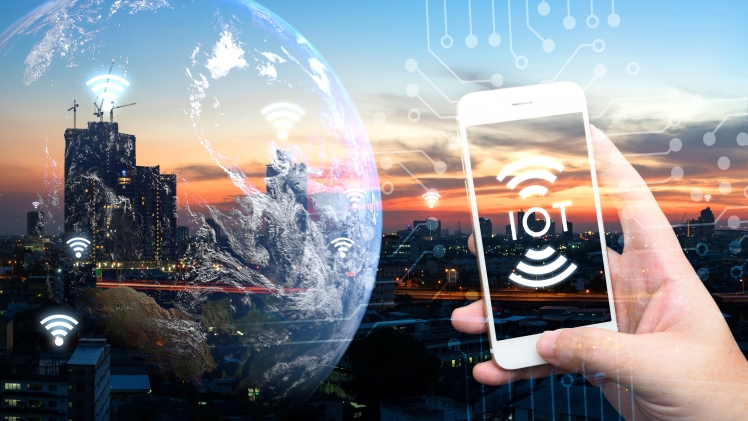The concept of the Internet of Things (IoT) was first put forward by Kevin Ashton while working for Procter & Gamble in 1999. This relatively obscure and abstract idea was then thrown into the limelight a decade later, when the Chinese government decided to take up a strategic step to include IoT in their five-year plan. While there is indeed a lot of hoopla surrounding IoT, many still don’t understand the nuances behind this phenomenon, and how the Internet of Things will inherently alter the way we live and operate.
In simple terms, the Internet of Things (IoT) is the interconnectivity and interoperability of devices and appliances over the internet. That is, the ability of machines to exchange information between themselves, and communicate with each other with the help of the internet. Through IoT, systems will be more sophisticated, and AI and machine learning will find greater purpose in every day lives of individuals. In fact, the rise of IoT has given birth to the concept of IoAT, which is the Internet of Autonomous Things. Essentially, IoT will enable machines to become smarter, and with faster internet speeds and low latency, these machines will be able to communicate with each other in real-time.
How does 5G technology come into the picture?
5G technology is being touted as a game changer as far as the Internet of Things is concerned. The hype around 5G technology stems from the fact that it promises lower latency and faster speeds. Industries using control systems will greatly benefit from these characteristics, as the time frame between the instruction and execution is significantly lessened. With this greater degree of freedom, one can control machines with precision, as the instruction can be sent to the machine in real-time, resulting in greater accuracy and efficiency. With the buzz around the launch of 5G technology, customers have changed their preference and are more inclined to purchasing a 5G mobile.
This does not concern the average consumer, who would want to know how IoT and smartphones can work together. Since the beginning of 2020, smartphone brands have been pushing out 5G mobiles, even though 5G networks are yet to be rolled out in the country. While discussing the Internet of Things (IoT), we also have to address the Internet of Everything (IoE). IoE is an extension of IoT, but includes people in this network of interconnected ‘things’. IoE is defined as the networked connection of individuals, processes, devices and things.
Internet of Things (IoT) will essentially enable you to interconnect various devices, including your home appliances, smartphones, sensors and other devices. These devices will be able to communicate with each other, and ‘talk’ to each other. Let us now understand this concept in greater detail, and see how smartphones are a key cog in the process.
Internet of Things (IoT) and smartphones
Smartphones today have become our all-in-one devices, and while it comes off as a generalization, it is indeed a fact. Brands like Oppo are very competent when it comes to implementation of IoT and hence people prefer buying Oppo mobiles as it is equipped with latest technologies and is also falls under the category of budget smartphone.Whether you want to create or edit documents, take photos, edit videos or even do your finances, you can rely on your smartphone to aid you with your efforts. With the advent of 5G mobiles, it is now possible for consumers to control their devices and appliances by using their handy mobile phones.
Today, you have multiple apps that allow you to connect to smart devices and appliances, and control them with just a few taps. For instance, you can control your smart air conditioner via an application, and switch it on and off easily. You can even set your desired temperature, or use specific modes for greater convenience. Similarly, you can control your smart TV through the Google Home application. You can also connect your smart refrigerator and smart speakers, among other devices, and use your smartphone as the IoT hub.
An IoT hub essentially interconnects all the other devices, and acts as the central command centre. You can use your smartphone to control every other smart device in your household. Furthermore, because of the 5G technology, the time it takes for you to send the instruction (tapping on your smartphone), and the time it takes for the device to respond (lowering the temperature, switching on the TV etc.) will be significantly less. Additionally, 5G technology will also facilitate faster internet speeds and greater bandwidth, which will undoubtedly change how we communicate with each other, or how we consume content via our smartphones.
You can now purchase your favourite 5G-enabled smartphone, whether it is a Vivo mobile phone or a model from a different brand by shopping at the Bajaj Finserv EMI Store. The EMI Store offers exciting deals and discounts, and lets you pay for the product in no-cost EMIs. Additionally, you can avail the zero down payment facility on select products, and bring home your new smartphone without paying any money upfront. The device will be delivered to you within just 24 hours of placing the order at the EMI Store.
Read more about: ssrmovies

